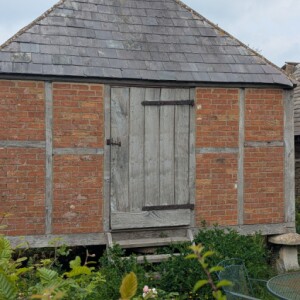Pride and Joy
There is a large tract of land beteeen the old Oxford-Stratford road and the Roman Fosse Way that fascinates me. It features at least two abandoned villages; a dismantled railway; public roads that deteriorate into cart tracks, then bridle or footpaths; no villages; an isolated farm called 'High Furze' - the old name for gorse - which gives a clue to its productivity. Most of the land is rough grazing, some of it given over to horses. If feels like a land of ghosts, a place from which humanity has been withdrawing for centuries
On its eastern edge is the hamlet where I took the picture, and some of the abandoned atmosphere seems to have spilled over. Online, I can find out little about its local history. Wikipedia is cursory; British history online is a brusque description of the manor, the church, and generalisations about other buildings, but little colour. That said, a settlement of less than 200 people has 11 listed buildings
This is one of them. It is beautiful, but quite impossible to make a beautiful picture of. It is as if the rusty ironwork, chicken-wire, overgrown hedges and incongruous sign are deliberate attempts to make it look dowdy. It is an 18th century grannary, sitting on nine immaculate staddle stones. On the other side is a doorway with wooden steps to it; these include a top step, which would have been absent in the original construction - the gap and the staddle stones serving to keep out rats
Bizarrely, the business that has put up the disfiguring sign made BBC news last year. You might think that a firm selling high-end luxury products would want to showcase the building that has given them their name, and their logo, but even the BBC photographer couldn't make a picture worthy of publication



Comments
Sign in or get an account to comment.


